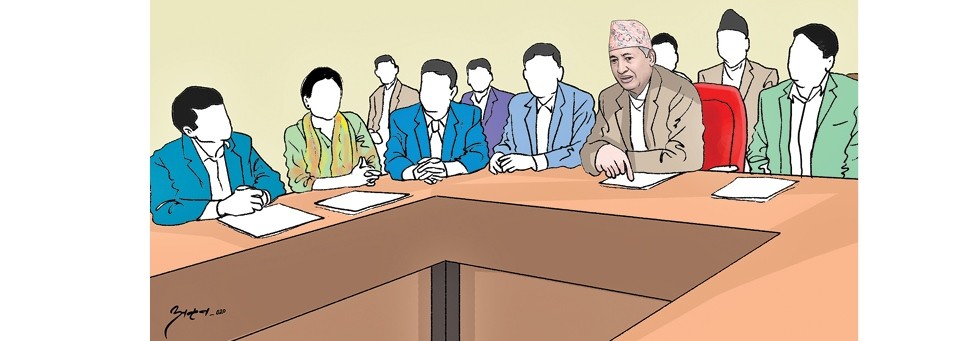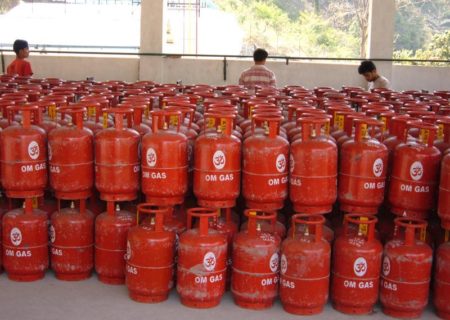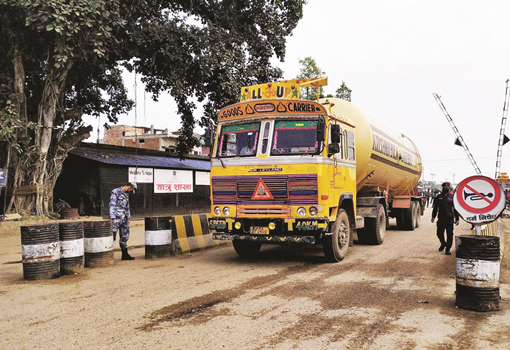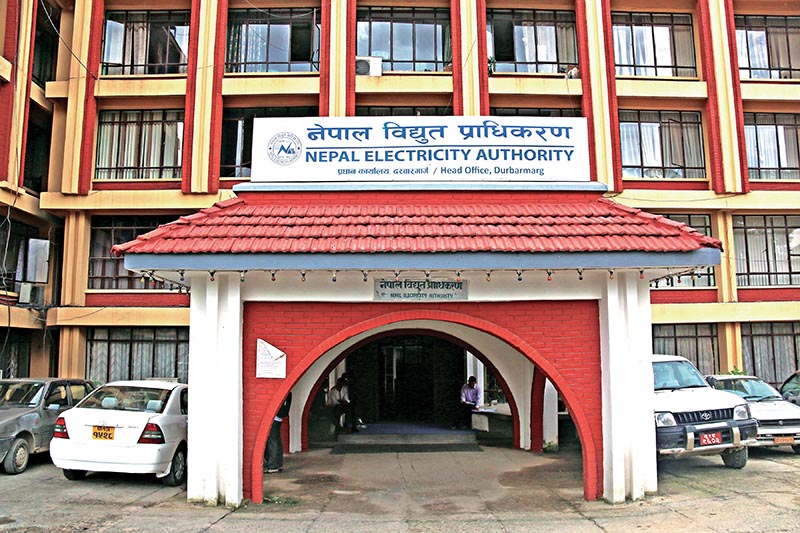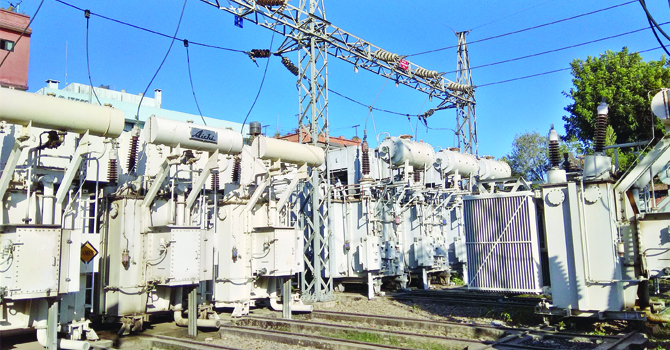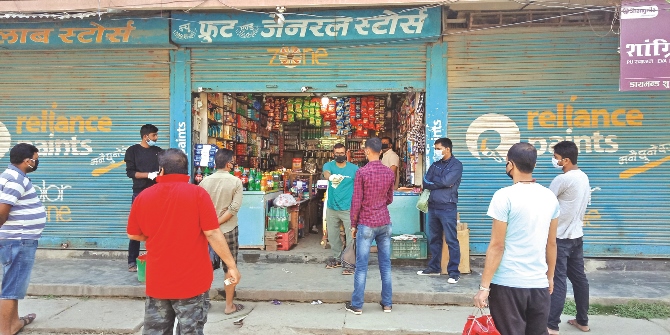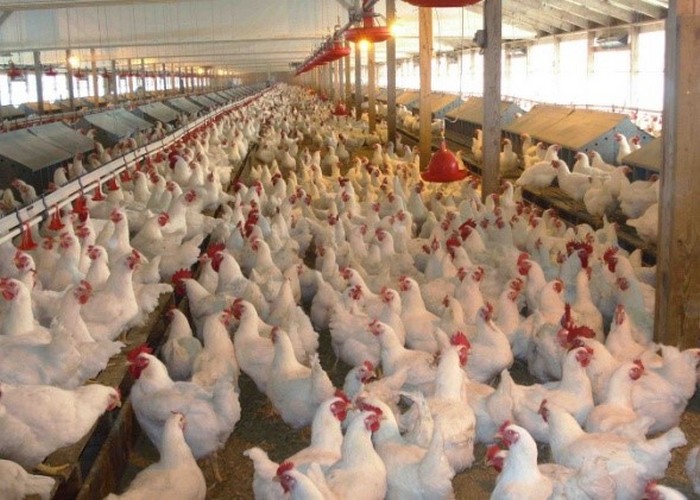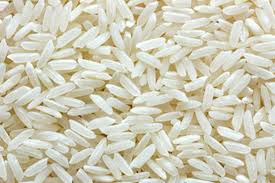Chitwan farmers test four-wheeler paddy transplanter successfully
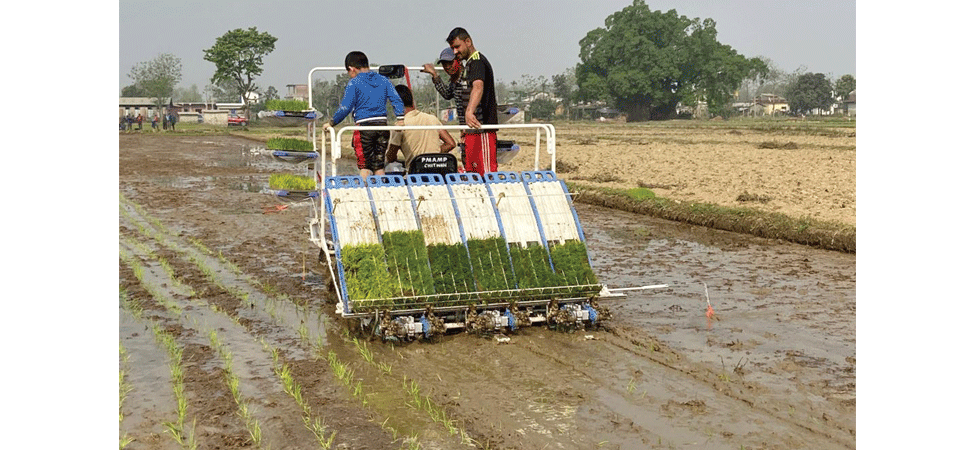
By Laxman Kafle
Chitwan, Apr. 6: Farmers in Chitwan are now making efforts to increase production and productivity of paddy by using modern farming tools.
Farmers here are confident that the use of modern agricultural tools and techniques in commercial farming will help them resolve the problem of manpower shortage and increase their savings.
Farmers of Bachhauli of Ratnanagar and Mumroz of Khairhani municipalities of the district have planted rice by using a four-wheeler machine for the first time.
The Agriculture Modernisation Project, Chitwan, had provided two machines to transplant paddy in six rows with 50 per cent grant for the commercialisation of agriculture to the cooperatives. The cost of the machine is around Rs. 2 million. Likewise, the project has also provided a seeder machine to grow saplings in a nursery for large-scale paddy farming.
The government has given emphasis to paddy plantation, especially spring paddy known as Chaite paddy in the potential areas, including Chitwan, to increase its production and make the country self-reliant in paddy and control rampant rice import.
Use of modern tools
Hare Ram Mahato, a farmer of Bachhauli of Ratnanagar Municipality, said that he planted paddy in around four Kattha of land using the modern tools.
“I spent only Rs. 800 for the transplantation of paddy sapling in four katthas of land using a machine this year. Adopting this technology is three times cheaper than the manual labour,” he said.
Similarly, Narayan Mahato, a farmer and chairman of Small Farmer Agriculture Cooperative Limited, said, paddy saplings were growing in trays after the use of technologies.
"For the first time in the district, we used the technology to grow saplings in trays where the machine itself manages soil, water and seeds as per the requirement, this technology yields quality seeds," Mahato said.
Transplanter takes one and a half hours to transplant saplings in one bigha of land. It takes around one day for a person to transplant paddy in one kattha of land.
Dual benefit
“With the help and use of modern tools in agriculture, I have planted rice in 10 katthas of land at a cost of Rs. 2,000 this year. I had to spend about Rs. 6,000 while planting paddy in this area of land using labourers in the past,” Mahato said.
"When you plant paddy with a machine, you don't have to spend a lot of money for the people who work there,” Mahato said.
Farmers will be able to reap more benefits if they can plant paddy at a lower cost, said Meghnath Timalsina, head of PMAMP, the project implementation unit, Chitwan.
“Mechanisation in agriculture sector not only reduces cost of production, but also increases productivity,” he said.
Use of equipment will be expensive for individual farmers, he said, adding that farmers are encouraged for land consolidation as production from fragmented farms will be very low.
“We are focusing on spring paddy plantation in Chitwan and other potential areas as the productivity of early paddy is 20 per cent higher than regular paddy,” he said.
Paddy is grown in around 1.5 million hectares of land in Nepal. But spring paddy is planted in only around 120,000 hectares.
The government has been investing for the construction of irrigation system including deep boring for ensuring irrigation facility and to provide quality seeds.
Madhab Paudel, an official at the Paddy Zone Programme, Chitwan, said that a Japanese-based technology machine was brought from China.
According to him, they had planted rice by the machine at around 10 bighas of land as trial which he said succeeded.
The three-wheeler machine had been planting paddy in Chitwan for some years but after its failure, four-wheeler has been used this year.
The cost for planting paddy in a bigha of land by using manual labour is around Rs. 16,000 but it has halved -- at Rs. 8,000 while using a machine for the same job, he said.
"Looking at the productivity of the planation this year, we expect to expand its area of production from next year," Paudel said. "The interest and participation of farmers has been encouraging," he said.
The productivity of paddy is expected to grow by 4.34 tonnes per hectare with the use of technology as planting in line with the machine reduces the chances of diseases and pests, said Paudel.
The paddy productivity in Chitwan is 3.95 tonnes per hectare at present.
According to him, Chaite paddy is grown in about 7,000 hectares of land in Chitwan. Paddy is being planted in around 27,000 hectares of land in Chitwan.
Farmers seek additional tools, technical support
“We, the farmers, are in need of a drier machine to keep crops safely in store during rainy season after its harvest,” Mahato said.
“Farmers can sell paddy at around Rs. 3,200 per quintal after three/four months of harvesting season. But they are compelled to sell at Rs. 1,800 per quintal during the harvesting time due to lack of a drier machine,” he said.
According to him, farmers are still discouraged in agriculture because they are facing shortage of quality seeds and fertilisers at peak time.
“We are seeking technical support from the government to control diseases and for suitable tools,” he said.
Recent News

Do not make expressions casting dout on election: EC
14 Apr, 2022
CM Bhatta says may New Year 2079 BS inspire positive thinking
14 Apr, 2022
Three new cases, 44 recoveries in 24 hours
14 Apr, 2022
689 climbers of 84 teams so far acquire permits for climbing various peaks this spring season
14 Apr, 2022
How the rising cost of living crisis is impacting Nepal
14 Apr, 2022
US military confirms an interstellar meteor collided with Earth
14 Apr, 2022
Valneva Covid vaccine approved for use in UK
14 Apr, 2022
Chair Prachanda highlights need of unity among Maoist, Communist forces
14 Apr, 2022
Ranbir Kapoor and Alia Bhatt: Bollywood toasts star couple on wedding
14 Apr, 2022
President Bhandari confers decorations (Photo Feature)
14 Apr, 2022


